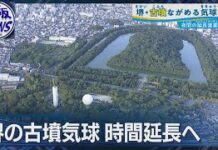On Nov. 5, the South Korean Defense Intelligence Agency reported in a closed-door audit by the National Assembly’s Intelligence Committee that North Korea is operating parts of the closed Kaesong Industrial Complex.
“We have confirmed that North Korea is operating some of the factories at the Kaesong Industrial Complex that were built by South Korean companies. Factories involved in light industry and factories making daily necessities are understood to be up and running,” the Defense Intelligence Agency said.
To confirm those findings, we examined recent satellite imagery to determine if the South Korean facilities are actually in operation. My analysis of thermal infrared data from an earth observation satellite developed by NASA and operated by the U.S. Geological Survey found that five of the South Korean factories in the complex are emitting high levels of heat, indicating that they are indeed in operation. The satellite’s infrared sensors detected particularly high temperatures at factories producing automobile parts and stationery, indicating that these two facilities are currently in operation.
Furthermore, the Kaesong Industrial Complex’s 15-story support center and its associated buildings have been stripped for parts during the decade and more since the complex was shuttered. The terrible condition of these abandoned facilities is evident in recent satellite images.
Thermal infrared analysis reveals operations at Kaesong Industrial Complex

An examination of thermal infrared data picked up on satellite sensors shows that high levels of heat are being emitted from five South Korean facilities at the Kaesong Industrial Complex. This suggests that North Korea is operating some of the factories at the complex without permission.
Thermal infrared data collected by the U.S. Landsat-8 earth reconnaissance satellite on Nov. 4 indicates that some of the factories at the Kaesong Industrial Complex are currently operating. Thermal infrared data is collected by quantifying surface heat detected by satellite sensors. Factories that are running vent heat outside, and that heat is detected by satellites. It can be inferred, therefore, that parts of the complex are being operated without authorization.
My analysis of thermal infrared data shows that satellite sensors have recently picked up high levels of heat being emitted from five South Korean factories in the Kaesong Industrial Complex. North Korea appears to be running factories in the complex without permission.
According to our analysis of the thermal infrared data, the average temperature inside the complex is 10°C, with the temperature distribution ranging from a low of 6°C to a high of 13°C. When mapping surface temperatures on a scale from blue (6°C) to red (13°C), the factories of South Korean companies Amos and Samas Electronics are both found to emit a high level of heat (13°C), indicating that these factories are operational. It is understood that the Samas Electronics factory produces automobile parts and that the Amos factory produces stationery and art supplies.
Factories owned by companies Jaeyoung Solutec, In the F, and Seokchon Ceramics were also observed to be emitting heat at a temperature of 12°C. The Jaeyoung Solutec factory is used to produce smartphones, molds and plastic parts; the In the F factory to produce women’s apparel; and the Seokchon Ceramics factory to produce tableware. All this suggests that Kaesong factories in the categories of light industry and daily necessities have been operating recently.
Ruins of the Kaesong Industrial Complex Support Center

The 15-story Kaesong Industrial Complex Support Center, which was a major hub for inter-Korean cooperation, and its associated buildings are in ruins after being stripped for parts for more than a decade of neglect.
Recent satellite images show that the 15-story Kaesong Industrial Complex Support Center and its associated buildings have fallen into ruins during the 10-plus years since the complex was closed (in April 2013). Satellite images taken on Nov. 5 show that the building interiors have been torn apart, with wreckage strewn all around. Only the frames of these abandoned buildings are still standing, if barely.
In particular, the 15-story support center is in such a dire state that it might conceivably collapse at any moment. Given its abysmal condition, it is presumably slated for demolition and dismantlement.
When the four-story Inter-Korean Liaison Office was built in 2018, it was envisioned as a permanent site for hosting dialogue and cooperation between South and North Korea, but it was blown up in June 2020. Today, the site of the demolished office is littered with debris.
Possibility of resuming operations at the Kaesong Industrial Complex
Practically speaking, there are numerous obstacles that would have to be overcome before normal operations could resume at the Kaesong Industrial Complex. Those include North Korea shifting its stance on politics and national security, the international community easing sanctions on the North, and South and North Korea regaining mutual trust.
But we can tentatively consider the possibility of the complex being reopened in the medium or long term. The current administration’s policy of engagement with North Korea and the rekindled hopes of the private sector can be regarded as positive signs.
Any progress on reopening the complex would have to be preceded by North Korea expressing a definite commitment to cooperation. If North Korea were to respond favorably to the proffered conditions, it should be possible to start reactivating the complex by having a handful of companies resume operations on a trial basis.
But North Korea is currently focused on its relationships with Russia and China, which have proven to be reliable partners. For now, therefore, Pyongyang may see little point in reopening the complex.
Disclaimer : This story is auto aggregated by a computer programme and has not been created or edited by DOWNTHENEWS. Publisher: dailynk.com







